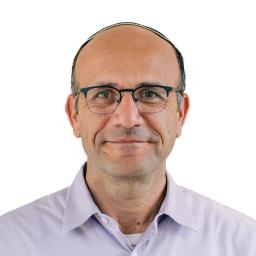Over the many years I’ve studied, led and taught in Jewish day schools, one of the most frequent claims I’ve heard is that schools are inherently different from one another. People proudly tell you how their schools enroll a special mix of students, how they serve families with distinct educational goals, or that they’re animated by a unique ideological mission. Such uniqueness—they go on—explains why the curriculum they use at another school won’t work in this one, why a new principal will have to work really hard to understand their community, and why research data collected from students in other Jewish schools won’t be relevant here.
There’s a grain of truth in these claims, just as it’s true that all humans differ from one another. At the same time, each of us is also part of multiple taxonomic groups that help explain a lot about us: our gender, nationality, faith, age, etc. We seem ready to accept this social-psychological truism in many contexts but not in our schools.
Exceptionalism makes for great marketing copy, but it can stop us becoming better versions of ourselves. Comparing ourselves to others, to whom we bear some similarity, can help us identify how to improve.
Over the last few years, our team at Rosov Consulting has helped day schools use survey data to benchmark themselves against other Jewish schools. I’m going to share a few examples. In each case, schools either joined a multischool study, or adopted (or lightly adapted) a survey previously used in other schools. The data have served them as both a mirror and window. They see themselves more clearly, and their expectations are shifted by how they compare to others, even if those other schools are not exactly like theirs.
Assessing Parent Satisfaction
As part of a funding agreement with UJA Federation of Greater Toronto, Toronto day schools must field a short parent survey each year and meet certain minimum satisfaction targets over a three-year period. Ninety percent of the survey items are shared, the remainder are school-specific. The parent responses have made clear that schools excel and struggle in diverse ways. They offer different products, and parents relate to those products in a fashion that evidently reflect varying priorities for their children’s education. These variations help schools better understand their particular markets.
Additionally, correlational analysis across all of the participating schools has also made visible some powerful shared truths. In all schools, parent satisfaction is most strongly associated with parent views of the effectiveness of school leadership and the quality of its communication, the school community and atmosphere, and the schools’ ability to meet the needs of students. If schools seek to increase parent satisfaction, they should focus first and foremost on these three areas in the order of priority listed above.
Measuring Students’ Attitudes to Israel
For many years, day schools have wanted to know what their students think and feel about Israel. Since October 7, many more schools do. Well, there’s a survey for that! Adapting a survey that our team previously developed for North American day schools with the support of the AVI CHAI Foundation, the King David Schools of Johannesburg have explored their students’ confidence to talk about Israel, their relationship to the country, and their willingness to advocate for it, and they investigated which school-based and extracurricular experiences most strongly contribute to these expressions.
Collected three times over an eight-year period, the data have helped the schools adjust their curricular foci, staffing priorities, informal and parent education program, and more. They’ve also been able to track the contribution of these adjustments over time. The same survey is about to be used by schools in the UK that seek to track the outcomes of a school change initiative in the same field. The national contexts are foreign, but the issues are not. It’s financially efficient to use an already validated survey instrument, and richly instructive to compare responses across diverse populations.
Evaluating Students’ Experiences of Jewish Day Schools
A last example has the most far-reaching implications. It comes from our team’s work with UnitEd, the day school initiative being advanced by Israel’s Ministry of Diaspora Affairs and Combatting Antisemitism. As part of this work, we recruited about 2,000 fifth, seventh, ninth and eleventh grade day school students from 33 schools in 13 countries to participate in a survey of students’ day school experience. These school contexts are often mind-bogglingly different: the study included, for example, the small, liberal community day school in Helsinki, and large denominationally oriented schools in Mexico City and Paris.
Across these diverse contexts, the data reveal remarkable consistencies that allow schools to assess how well they’re engaging their students. In almost all the schools, students agreed above all that “attending a Jewish school makes me feel like I belong.” This, it seems, is the core day school experience whatever the context. At the same time, in a broad majority of schools, fewer than half of the students agreed that “my Jewish studies classes are some of my most favorite classes.” Addressing this phenomenon, it seems, is the ultimate day school challenge.
The consistency of responses to key survey items such as these has served as a provocation and a spur to schools. When they see how similar they are to so many schools across the world, they’re ready to ask themselves important questions about the data points where they diverge from others, both positively and negatively. And as more schools sign up to use this survey instrument, the picture they see of themselves and of others sharpens further.
If you’re ready to look in the mirror and gaze through the window, please be in touch with our team at Rosov Consulting, whatever language you speak. Feel free to contact me at [email protected] or my colleague Natasha Nefedyeva at [email protected].



